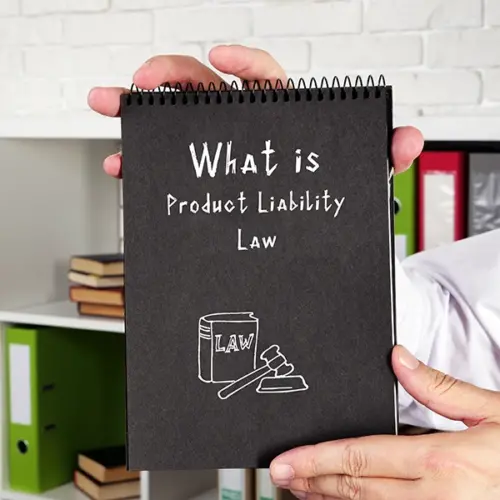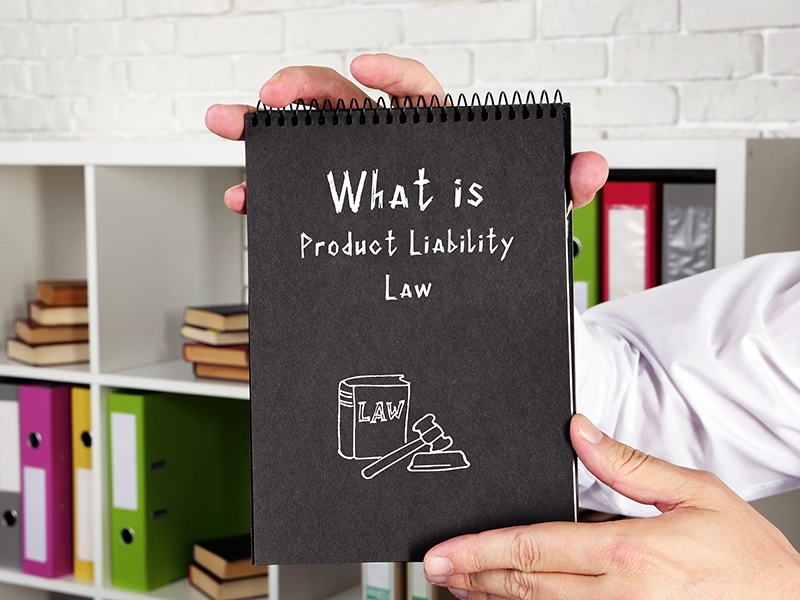
We face many choices in daily product purchases. Generally, we trust these products to work well and be safe. Sadly, this trust is not always justified. Often, defective products initially seem fine. Let’s explore what happens when a defect causes injury.
What is Product Liability?
Product liability is legal doctrine that lets injured consumers sue makers or sellers. It’s based on their duty to ensure product safety.
There are three main types of product liability:
- Manufacturing defects: These defects occur when a product is made incorrectly, such as when a part is missing or installed incorrectly.
- Design defects: These defects occur when the design of a product itself is unsafe, even if the product is made correctly.
- Marketing defects: These defects occur when a product is not properly warned about its risks, or when there is inadequate information about how to use the product safely.
To win a product liability lawsuit, the plaintiff must prove that the product was defective, that the defect caused their injury, and that the defendant was negligent in designing, manufacturing, or selling the product.
The Consumer Expectation Standard and the Risk-Utility Standard
In order to determine whether a product is defective, courts often use two different standards: the consumer expectation standard and the risk-utility standard.
- The consumer expectation standard: Under this standard, a product is defective if it is unreasonably dangerous to an ordinary consumer. This means that the product is dangerous in a way that the consumer would not expect.
- The risk-utility standard: Under this standard, a product is defective if the risks of using the product outweigh the benefits. Even if the product has benefits, it is too dangerous to use..
The court will choose which standard to apply based on the specific facts of the case. For example, courts are more likely to apply the consumer expectation standard in cases involving simple products that ordinary consumers use. They are more likely to apply the risk-utility standard in cases involving complex products that experts use.
How to File a Product Liability Lawsuit
If you have been injured by a defective product, you may be able to file a product liability lawsuit. To do so, you will need to hire an attorney who specializes in product liability law. Your attorney will help you gather evidence to support your case, such as medical records, product testing reports, and expert witness testimony.
The amount of compensation you can recover in a product liability lawsuit will vary depending on the specific facts of your case. However, you may be able to recover damages for your medical expenses, lost wages, pain and suffering, and emotional distress.
If you have been injured by a defective product, it is important to speak with an attorney as soon as possible. An attorney can help you understand your legal rights and options and can help you file a product liability lawsuit if necessary.
Here are some additional resources that you may find helpful:
- Consumer Product Safety Commission: https://www.cpsc.gov/
- National Safety Council: https://www.nsc.org/
- American Association for Justice: https://www.justice.org/
Examples of Cases That Can Result in Product Liability
Plaintiffs in product liability cases will often use all available theories to obtain recovery. That means if you are injured by a product, your lawyer may well allege negligence, breach of warranty and strict liability. The theory of recovery does not affect the amount of your recovery.
- Defective Design—designs make product inherently dangerous:
A person’s face, neck and back were burned because the pressure cooker he was using could be opened before it was depressurized. The plaintiff opened the cooker according to its design, and the scalding contents sprayed onto the plaintiff.
- Defective Design—Missing Safeguards:
Plaintiffs have recovered when dangerous machinery they were using (lawnmower, snow-blowers, industrial equipment) did not have appropriate safety designed in, such as automatic shutoffs and guards that keep hands out of dangerous areas of equipment.
- Defective Design/Hidden Defect—Medical Devices:
Approved and in use medical devices can have unknown impacts on the body. When a flawed medical device causes additional injury, illness, need for additional surgery or death, a person may recover for their injuries. A recent case involves a popular hip replacement device that caused new injuries to patients requiring a new hip replacement. The company subsequently recalled the device and is now dealing with the damages of those injured by the faulty device.
- Failure to Warn—Inadequate Instructions/Safety Warnings:
When flawed or inadequate instructions on assembly, use, or storage make a product dangerous or more dangerous, those injured by it may recover for their injuries.
- Malfunctions:
A person was making fresh pasta with a machine designed to turn off when the user opened the lid. In this case, when the person opened the lid, the machine malfunctioned and did not shut off, causing injuries that led to the amputation of the person’s hand. The machine’s manufacturer was in Italy and had no office or employees in the U.S. The plaintiff was able to recover for the injuries from the U.S. distributor of the product.
A malfunctioning pool heater emitted lethal amounts of carbon monoxide resulting in the death of a swimmer. The swimmer’s estate recovered for wrongful death.
- Hidden Defects/Defective Processes: Toxic Food:
When food processed at a dirty or contaminated plant makes people sick, they may be able to recover for their injuries.
- Hidden Defects—Toxic Chemicals in Products:
When a product contains toxic ingredients, injuries can arise years after purchasing, installing, or using the product. Materials such as lead in paint, asbestos in insulation, DDT sprayed on crops have all been the subject of litigation. YIf toxic ingredients in a product have poisoned or otherwise injured you, you may be able to recover damages.
- Hidden Defects—Dangerous Medications:
Some medications have dangerous, but unknown side-effects that become known only after approval and use. When an unknown side-effect causes severe injury, illness, birth defects or death, a person may recover for their injuries. The most famous case of this type was about the synthetic estrogen, DES, which caused numerous and severe birth defects in babies and increased cancer risks in mothers.
Conclusion
We’ve discussed various product liability scenarios. If a product fault injures you through no fault of your own, consider consulting us. Understand that specific circumstances influence our ability to take a case. There’s no settlement guarantee.

